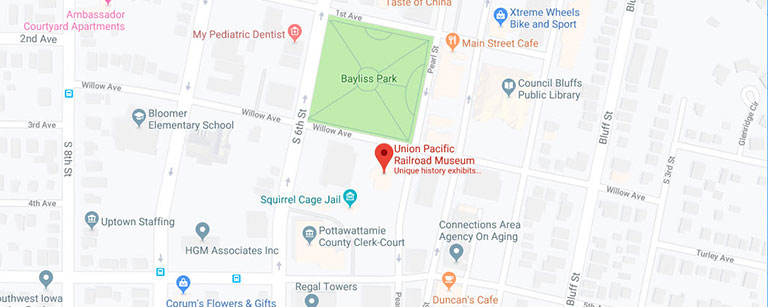Wheels of War Traveling Exhibit
Railroads have played a part in every U.S. war since 1860. During the Civil War, World Wars I and II, the Gulf War, and even today, railroads transported soldiers and everything they need, from tanks to uniforms.
The American Civil War (1861-1865)
The Civil War is often referred to as the “first railroad war,” as railroads became vitally important to both Confederate and Union troops. Railroads, a relatively new technology at the time, could quickly move troops and supplies and had the unique capability of carrying guns and artillery. But the North and the South had very different rail networks.
Our Hat’s in the Ring for Victory
In the first decades of the 20th century, car travel was in its infancy and roads and highways were still being created. What was in place was a massive rail network connecting cities and small towns. Most people travelled by rail between cities, and almost all goods were shipped by rail to busy coastal ports. The home front for American railroads during both World Wars was transporting vast amounts of troops, military equipment and supplies from United States bases and factories to coastal ports. During World War I (1917-1918) alone, more than 100,000 new rail cars and almost 2,000 steam engines were requested to meet wartime demands, costing $380 million – or $5 billion today!
Hospital Trains
Beginning in the Civil War and continuing into both World Wars, medical evacuation by railroad was essential. During the Civil War, soldiers were transported in boxcars. Custom Army cars later were built specifically to care for the wounded, designed to act as fully functioning hospital wards. These cars contained areas to see patients, as well as sterile rooms for emergency operations. Kitchen cars were included to meal prep for patients. During WWII, self-contained hybrid hospital cars were developed to include all critical components, including ward areas, dressing areas and a small kitchen. Hospital trains waited at ports for patient arrivals, transporting them to stationary hospitals for ongoing treatment. At WWII’s end, the Army owned 380 hospital cars.
Railroads are the Backbone of Offense
On April 15, 1861, just days after the first shots rang out at Fort Sumter; President Lincoln seized control of Northern railroads. On January 31, 1862, Congress authorized the president to take possession of and place under military control the country’s telegraph lines and railroads whenever he felt public safety might require it. This act of Congress affected wartime railroad operations for a century. The Military Railway Service (MRS) ceased control over railroads Aug. 8, 1865, but was not entirely disbanded.
The National Defense Act, passed June 3, 1916, included provisions for commissioning men into an Officers’ Reserve Corps and enlisting men with special experience into an Enlisted Reserve Corps to cover the Army’s various branches. For example, doctors and nurses went to the Medical Corps, telephone and telegraph men to the Signal Corps. Railroad men and engineers were commissioned into the Corps of Engineers.
They Can Do It!
During wartime, women and minorities were relied upon to fill the labor shortage as men were called to the front lines. During WWII, 350,000 men joined the war effort, but despite this massive effort to support the military, railroads saw their employment numbers rise with thousands of women and minorities joining the workforce.
Spirit of Union Pacific
Union Pacific’s Locomotive, UP 1943, The Spirit, is only the 16th commemorative locomotive introduced in the company’s history. The Spirit honors the United States’ military and the men and women within its ranks. Created in collaboration with Union Pacific veterans, it illustrates the railroad’s connection to the thousands of veterans who helped build America. Every detail of The Spirit incorporates pieces of each military branch, including Air Force Silver, Navy Battleship Gray, the Coast Guard “racing stripe” and camouflage reflecting the Army and Marine Corps. It even incorporates the old Strategic Air Command’s “nose sash,” and as the car passes by, the final message seen is a dedication to U.S. POW/MIAs with the motto “You Are Not Forgotten.”

